A Celestial Celebration
CELESTE EVANS
“Beauty in Magic”
“Girls can’t do magic,” said the boy, brushing off a question from a nine-year-old who wanted to know how he had made knots appear in a handkerchief. In 1940, that would have been the general opinion of many male magicians, especially those who weren’t thinking about Adelaide Herrmann or Talma or Dell O’Dell. But it was the wrong thing to say to little Ruthie Evans.
That remark ignited something. If there is anything I have learned from studying the history of women in magic, I’ve discovered just how much stubbornness it takes for women to make a career in the field, all the more so during eras when they have so little encouragement and so few role models. The initial spark may die early, or the temptation to quit may be powerful when that interest is repeatedly belittled. But if the spark is strong enough, a dismissive comment may have the opposite effect. Dell O’Dell always claimed that when her father told her, “Women can’t do magic,” her (one-quarter) Irish temper was provoked.
Margaret Ruth Steward Evans eventually changed her name to the more magical-sounding “Celeste”—a heavenly name that took her around the world for five decades, with one of the most celebrated magic acts of her era. She was born in the small town of White Rock in British Columbia, Canada, on December 31, 1931, just fifteen minutes before the New Year. Growing up under the somewhat sour disposition of her mother, Ruth developed an interest in magic at age nine and had to practice in secret in her bedroom loft, trying out sleights on the bed so as to make as little noise as possible when the cards dropped. As a teenager she saved up her tips from waitressing jobs and bought a magic book—years later she thought it was by Tarbell—spending years learning its contents without a mentor to guide her. Ruth owned only one pack of cards, so she frequently washed and powdered them to keep them looking good.

She took business courses during her senior year of high school, after which she moved to Vancouver (about fifty miles from her home) and took a job as a stenographer. But Ruth knew that she did not want to spend a career operating Dictaphones. So she found a teacher in magic-shop owner Jon Kirby, who tutored her for two hours—and two dollars—per week. While the Vancouver Magic Circle did not allow female members, she occasionally attended meetings as a guest, where she met such visiting giants as Okito, Blackstone, Slydini, and Channing Pollock. Encouraged by these luminaries, Ruth became Celeste and began performing wherever she could find work—at lodges, expos, and tent shows. The gigs were unpredictable, and she sometimes survived on baloney sandwiches. But as she paid her dues, Celeste was also polishing her skills.
In 1953, the 21-year-old made her first overseas tour, travelling with a group to Korea to entertain the troops. Sponsored by the Canadian Legion, the seven-member troupe brought entertainment (and cartons of cigarettes) to the soldiers, and signing autographs gave Celeste her first taste of celebrity. Openings followed with a country music band. At that time her act was silent and consisted of card tricks, silk magic, and escapes. A TV appearance in Toronto in 1954 opened the door to an agency, which booked the young magician into a string of night clubs in Montreal.
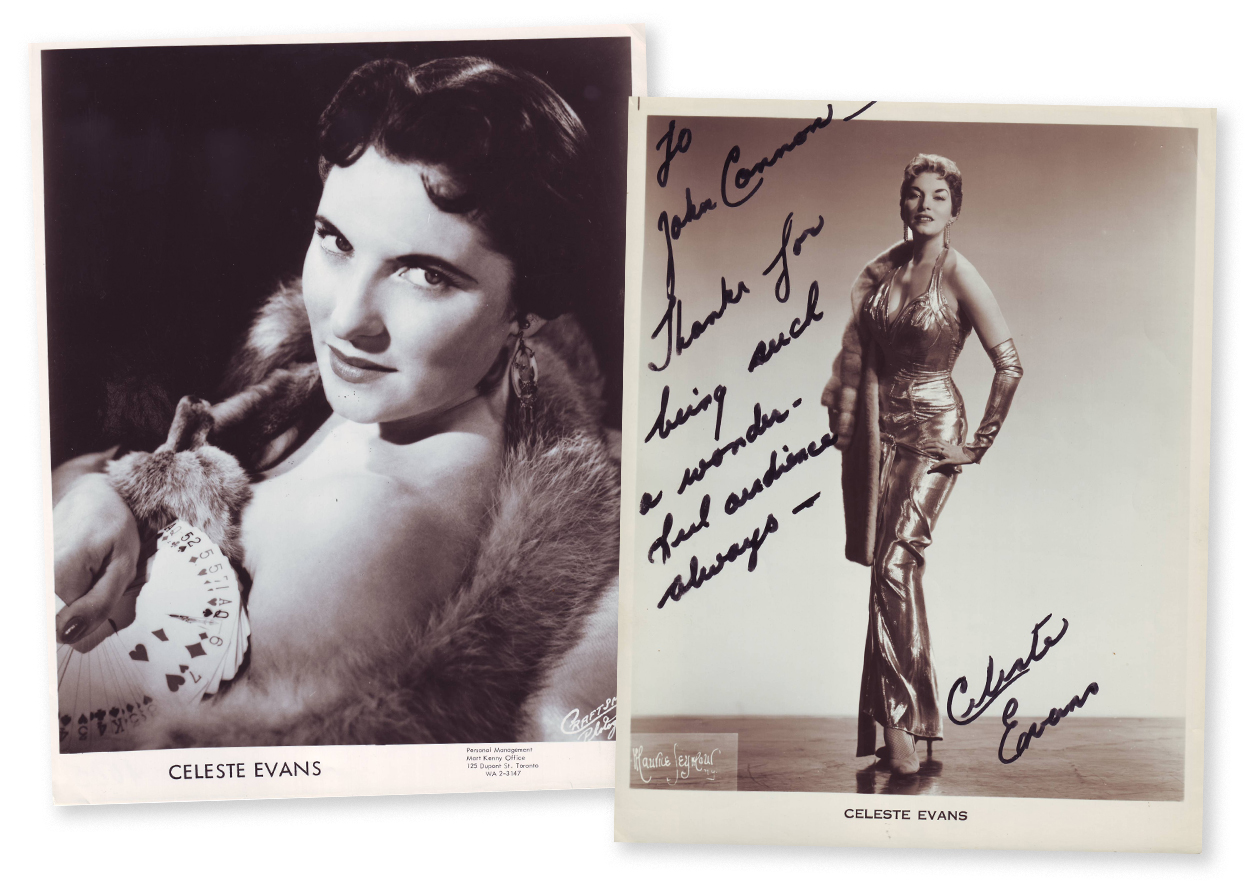
To get a visa to work in New York in 1956, Celeste had to demonstrate that she wasn’t taking jobs from any American. Since Dell O’Dell had moved to the West Coast five years earlier, and since Joan Brandon was now doing mostly hypnotism, Celeste believed she would be the only lady magician in the Big Apple. She wasted no time going straight to the top with a booking at the famed RKO Palace, and she was soon initiated into the community of magicians in New York City. Once when her mother was visiting at a banquet, her new friends played a practical joke. A voice on the loudspeaker congratulated Celeste Evans on her engagement to Ricki Dunn. Her mother was horrified and demanded to know what this man did for a living. Celeste knew it was a gag and took great pleasure in telling her mother that Ricki was a pickpocket. Within seconds, the woman’s dentures had hit the table.
As her reputation grew, Celeste invested in glamorous new costumes and started her famous work with doves, using every misdirection she could imagine in order to produce them. With no sleeves and no pockets and no breathing room in her dresses, the productions of eight to twelve doves seemed impossible. To young male magicians in New York City, this newcomer now became a threat, and many started spreading tacky rumors—even calling the Humane Society with false reports that she was abusing birds in her act. In addition to the doves, her shows in the ‘50s included card and billiard ball manipulations, rope tricks, and the Mutilated Parasol. In one steamy effect, she produced a dove and put it on her shoe. While the dove crawled up her outstretched leg, up her tight-fitting dress, and onto her shoulder, Celeste would produce four more doves from a streamer. She soon developed a repertoire that could expand from 9 minutes to 45. When occasions called for close-up or walk-around magic, she performed everything from card flourishes to crystal ball readings.
International fame beckoned. A 1957-58 tour of US Air Force bases took her to Germany, then to various places in Africa, and later to Greenland and Iceland. The UN sent her to the Gaza Strip in 1959. While on tour in England she met a fellow lady conjurer, June McComb, and her husband Billy. The British magicians took to Celeste and plotted to sneak her into the all-male Magic Circle headquarters, and she gamely dressed as a man to go along. Later, the noted agent Lew Grade booked her into Denmark and Sweden, where she played the Tivoli Gardens in Copenhagen and the China Theatre in Stockholm. In Madrid she worked the Pasa-Poga Club.
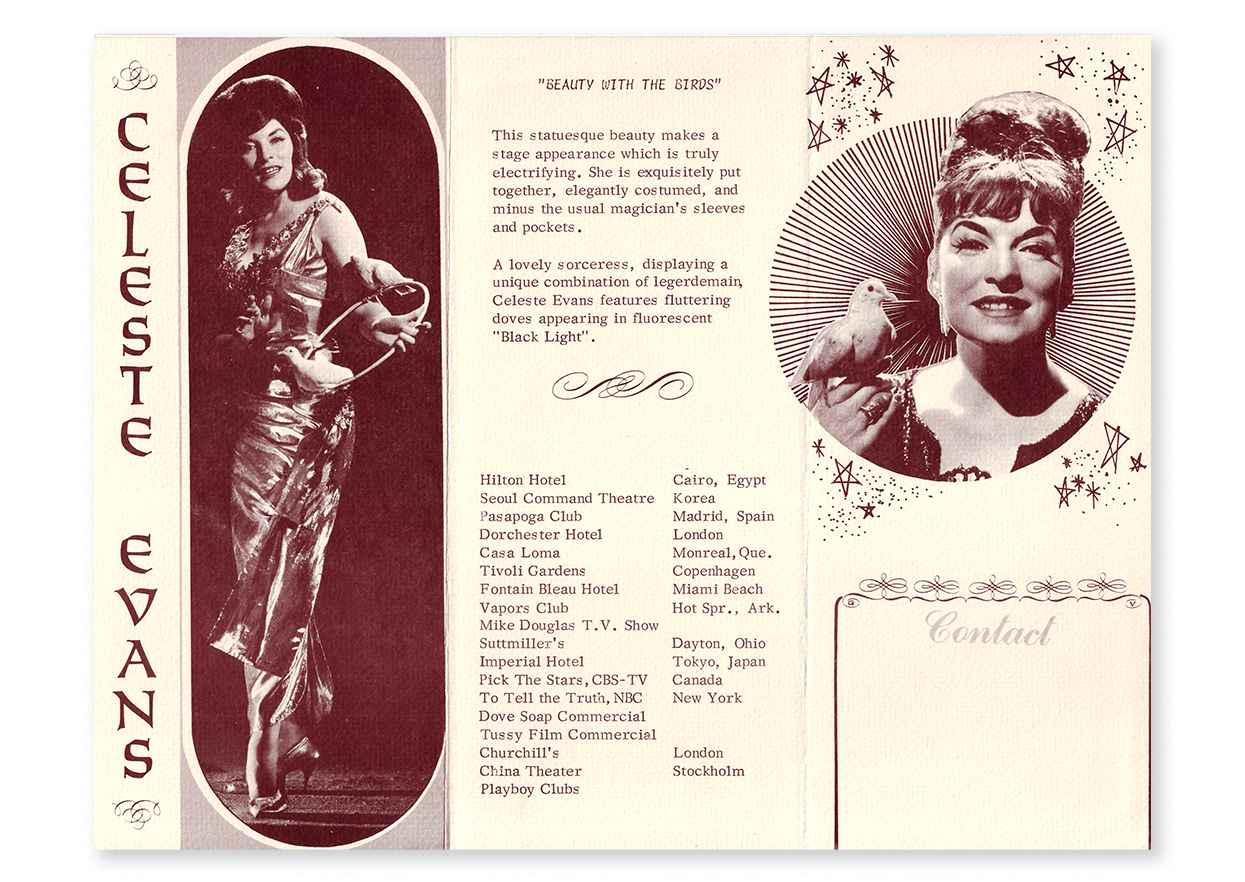
Her blossoming career provided many unusual opportunities. Celeste went on a lunch “date” with Liberace in New Jersey, appeared in a Broadway film called Sex Kittens, and was held at gunpoint for over eight hours on a plane in the Belgian Congo during a revolution. In 1961, she was selected to join over 20 other entertainers in a Cultural Exchange Program championed by President John F. Kennedy. Magician John Shirley and drummer Buddy Rich were also among the cast. The four-and-a-half-month tour of the Middle and Far East had the political goal of spreading American goodwill and put the group in front of both general audiences and royalty in Afghanistan, Thailand, Cambodia, Singapore, Iran, and other countries. It was a challenging adventure—they braved monsoons in Nepal, war-torn regions in Vietnam, and leper colonies in India. Celeste met Prime Minister Nehru, and her doves even pooped on the President of Indonesia. In Malaysia she saw John Calvert’s famous “Magicarama.” When he asked if she wanted to join his show, Celeste answered, “Who would get top billing?”
Few female magicians had so many stamps in their passports. But within days of returning to New York, Celeste was back on the club circuit and doing TV commercials and guest spots. Throughout her career she would appear on The Paul Winchell Show, Arthur Godfrey, To Tell the Truth, Not for Women Only, and other programs. After a six-week Air Force Base tour of the US, she was booked into the Playboy Club by a Chicago agent named Harry Breyn, who came to see her perform every night. Celeste went on to Las Vegas, and then returned to Vancouver, where the magicians who remembered her as an overweight 20-year-old were stunned to see the statuesque beauty in a sleeveless gown produce ten birds from who-knew-where. Despite an opportunity to tour in Manilla, Celeste came back to Chicago, where she married Harry in December of 1962.
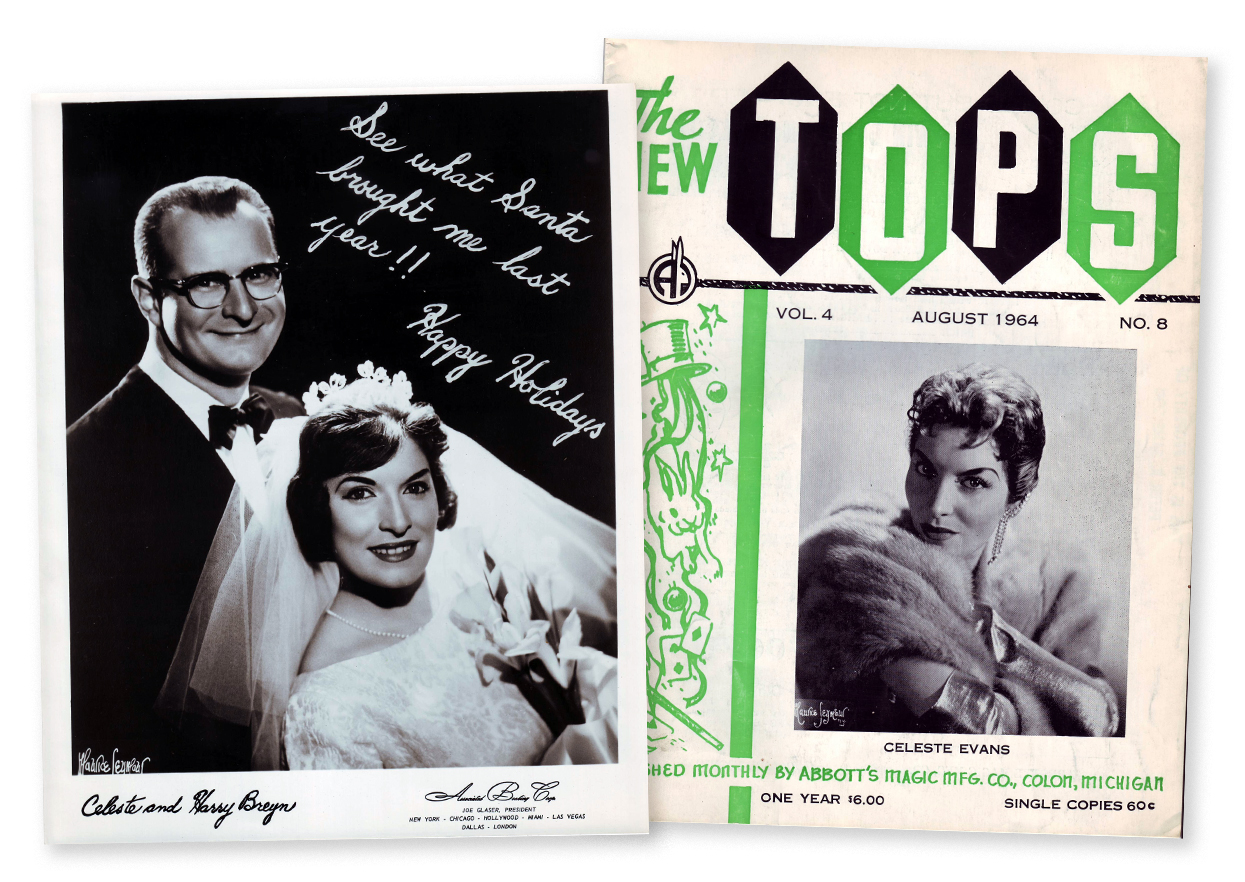
The popular magician and emcee Werner “Dorny” Dornfield wrote this about Celeste in 1964: “You will note immediately that this artiste has the appearance of a really excellent performer. And that is what she is. Class; ability; charm and personality plus. She knows a lot about magic, both theoretical and practical. She is always working and always making good. She offers a colorful routine of sophisticated sorcery and features dove tricks. The doves are all rainbow hued and besides being used as production props, they are exceptionally well trained to do various intriguing bits of business. After doing several of her smaller magical effects, she segues into her dove routine. This is done in ultra violet (black light) and this combination makes for beautiful magic: poetry in motion.”
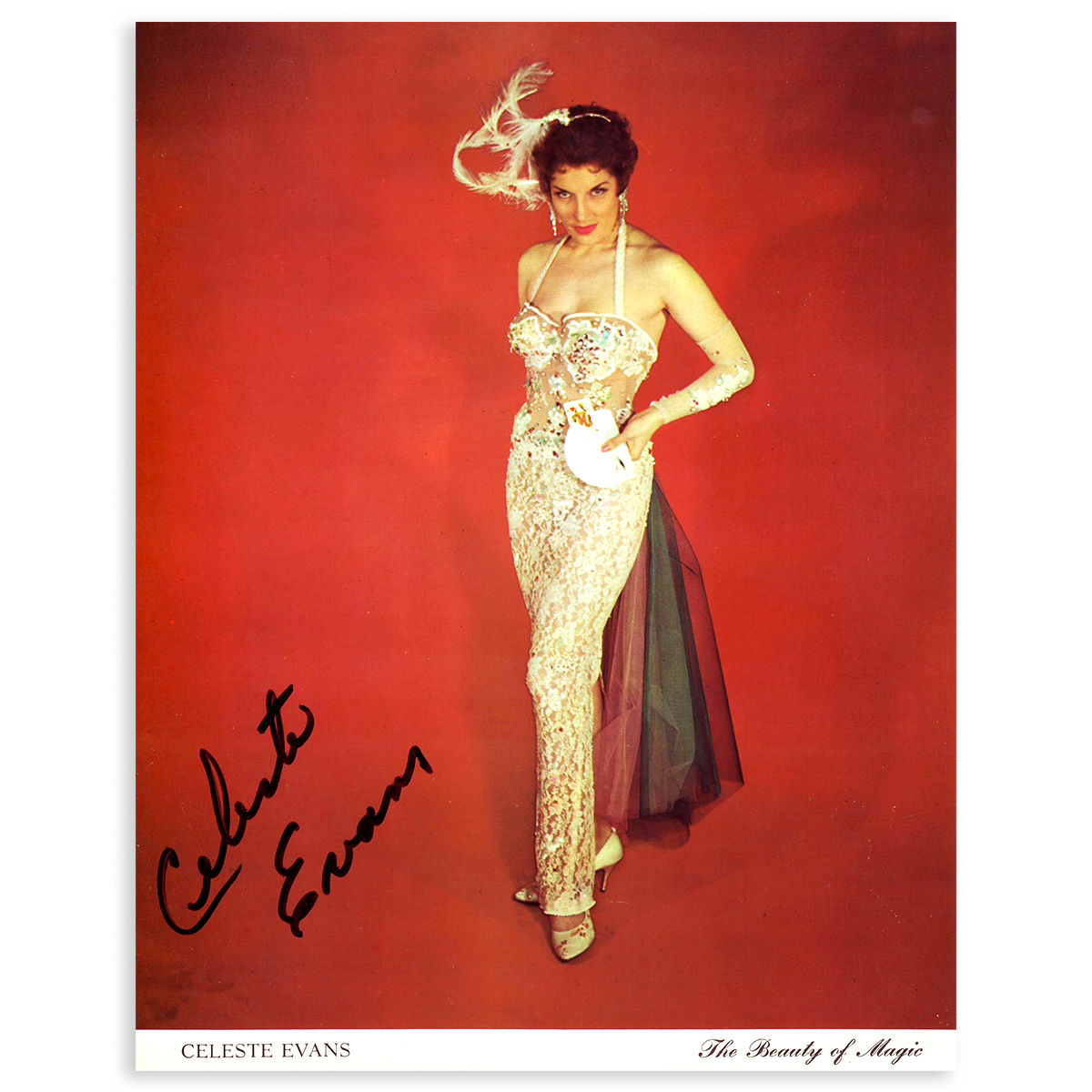
Celeste and Harry settled in Evanston, Illinois, and she performed mostly in the Chicago area. She kept working, even performing just a week before her son Evan was born in 1968. A daughter Evanna followed in 1969. Celeste frequently worked magic conventions in those years, and in 1970 she won the Jack Gywnne Trophy for Excellence in Magic at the annual Abbott’s convention in Colon, Michigan, where she posed for a photo with a young fellow Canadian magician in jeans and cowboy boots. His name, of course, was Doug Henning.
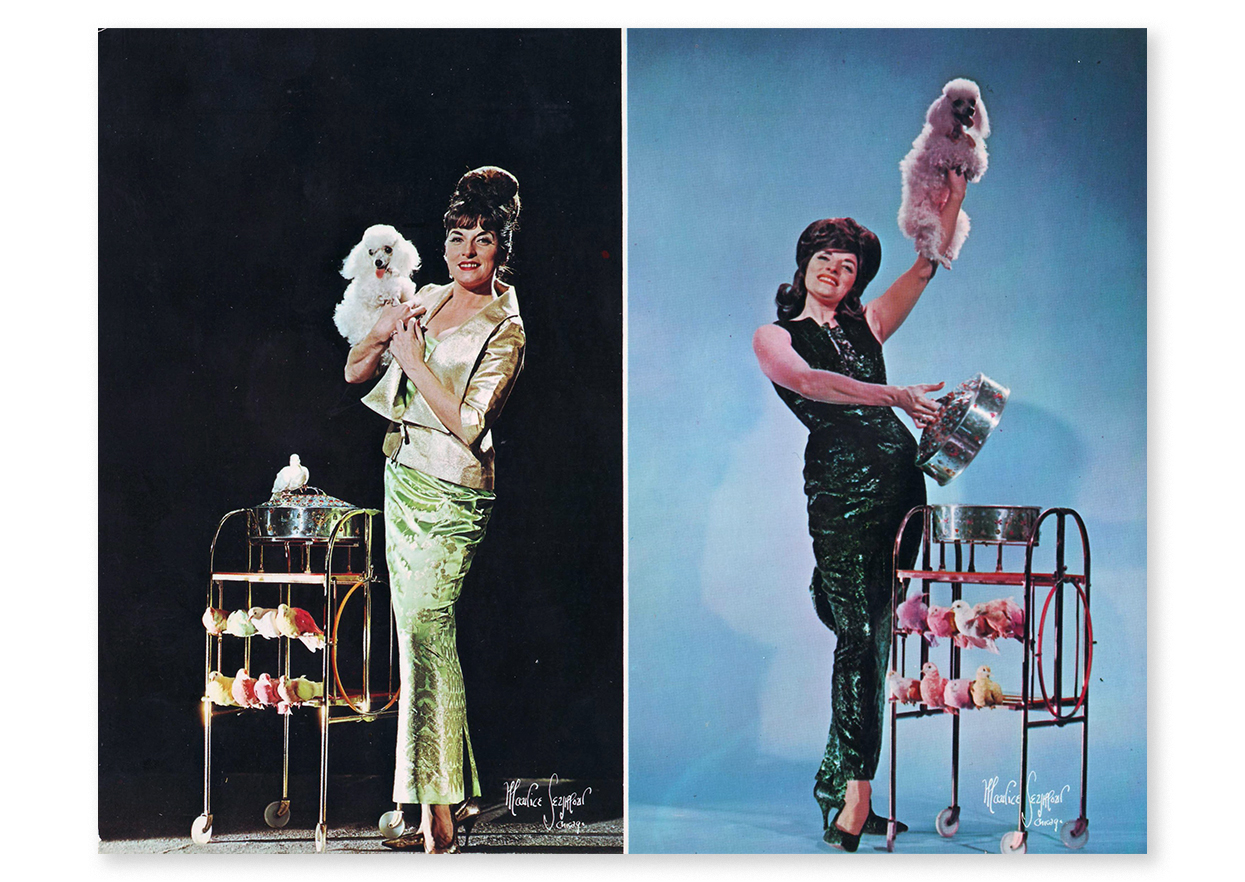
Celeste worked hard to balance family and career. In addition to her magic and his agency, she and Harry took up golf and sailing. As soon as the children were old enough, they began assisting in the act. Their mother added two illusions to her normally compact show so that the children could perform in them. In the early ‘80s, both kids learned to twist balloons and became clowns, sometimes working as warm-up acts for Celeste.
After Harry died in 1984, Celeste took over the agency, running it during the day and doing banquet shows at night. She retired from the agency in 2002, having married a man named Herbert Mitchell. That year they moved from Chicago to St. Petersburg, Florida.
After retiring her doves and cards, Celeste remained close to the world of magic, receiving repeated honors. She was inducted into the SAM Hall of Fame in 1998, and her props were housed in two prominent museums—those of David Copperfield and Ray Goulet, until the latter was dispersed at auction. In 2009, Celeste received the Academy of Magical Arts Performing Fellowship. She wrote two books: Has This Ever Happened to You (2008)—a collection of anecdotes from magicians about moments that went wrong on stage—and I Can Still See Me (2011), an engaging memoir of her life in magic. Celeste Evans died on July 25, 2017, at the age of 85, leaving behind her two children and two grandchildren, and tons of fans.
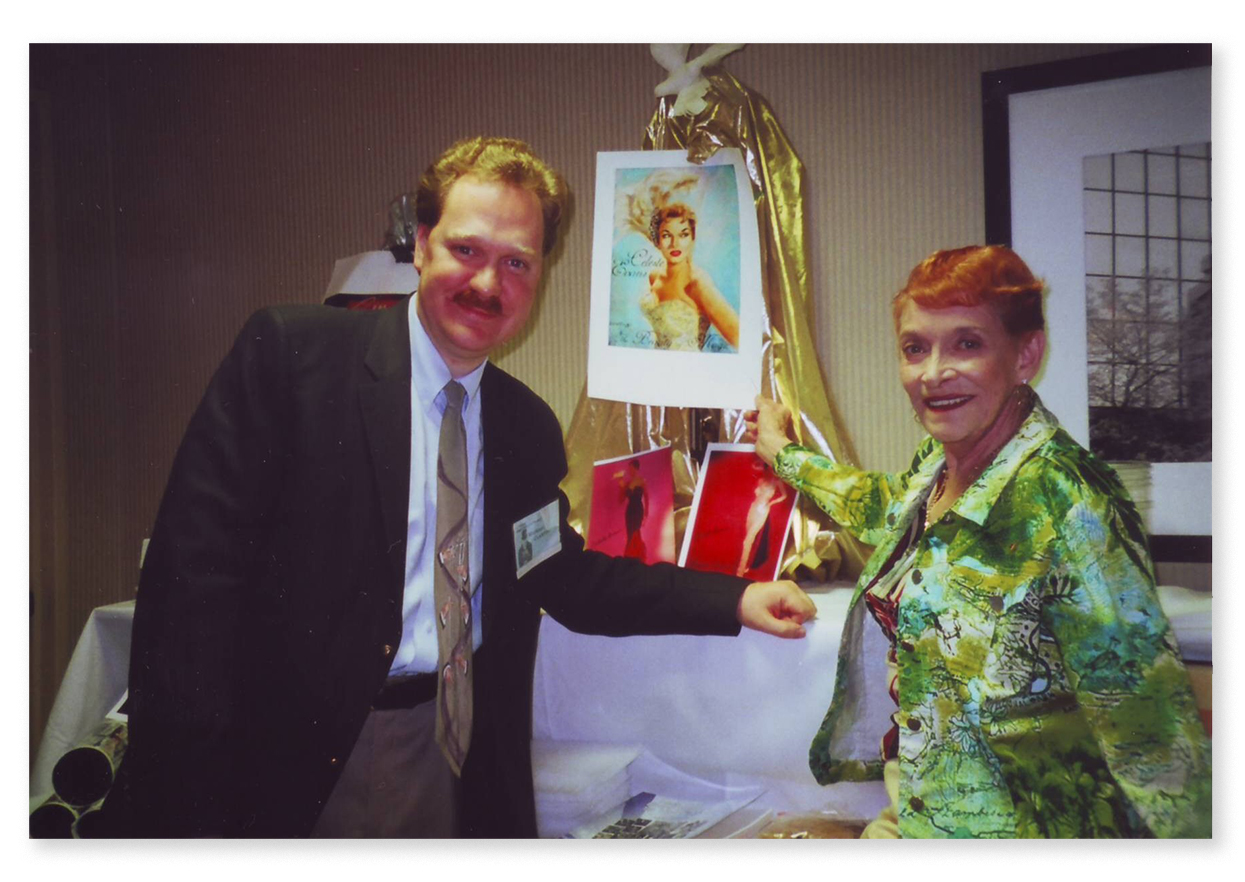
One fan in particular was especially gratifying. In 1990, Celeste was in Washington State on the way to visit her childhood home of White Rock, when she ran into Don Cornett—the boy who told her in 1940 that “girls can’t be magicians.” Now, fifty years later, he wanted her autograph.
A version of this article originally appeared in the September 2006 The Linking Ring and appears here by permission.
Stargazing
As usual, I’ll end with a roll-call of women in magic whose names begin with “E.” Georgiana Eagle (1834-1911) performed second sight in the 1840s and also worked as Madame Card. A magician named Eloise performed a black art act in Boston at the turn of the last century, while Egypta worked the music halls in Britain around the same era. Empress escaped from restraints circa 1905-1910. Miss Evita Enireb of Peru was the daughter of well-known illusionist Enrique Enireb and starred in her own show from the 1910s to the 1930s. Madame Ellis and Lady Ethel were part of different husband-and-wife mentalist teams thirty years apart, and Hope Eden (1892-1970) was the first mentalist to perform on radio. Halima Effy survived a concentration camp in Germany and performed magic in France after the war. In the 1970s, Dagmar Enzfelder and partner performed escapes as the “New Houdinys” from Austria. Dolly Eisch (1924-2014) of Lancaster, PA, was still working as a magician well into her eighties.
Among more recent performers, there is Linda Eck of Chicago, Miss Electra of Vienna, Fee Eleisa of Germany, and Eleonora of Italy. Sophie Evans is based in Las Vegas, and Tessa Evason is half of one of the leading mentalist teams working today. Oh Eun-Young of Korea is a TV-star with an enormous fan base, and her younger fellow Korean, Eden, won second place in manipulation at the 2022 FISM. Hollie England is from the UK, performs in Las Vegas, and is currently, as of 2023, featured in the “Champions of Magic” in their Worldwide Wonders tour. AnnaRose Einarsen is a magician, mentalist, and hypnotist working in Las Vegas. She and Lance Rich both “discovered” Vegas’s first magician on the strip, Gloria Dea, at the same time and helped to bring her story to the world of magic.
Finally, this online exhibition would not be possible without Julie Eng, a gifted magician, assistant, photographer, writer, and editor. She is the daughter of beloved Canadian magician and magic dealer Tony Eng, and currently serves as the Executive Director of Magicana in Toronto. She has designed such important books as The Magic of Johnny Thompson and edited the nine-volume opus by Eddie Dawes, The Rich Cabinet Collection, and is the current editor of Magicol: A Journal of Magic History and Collectibles. She is a tireless advocate for—and a brilliant model of—women in magic… and a dear friend.
